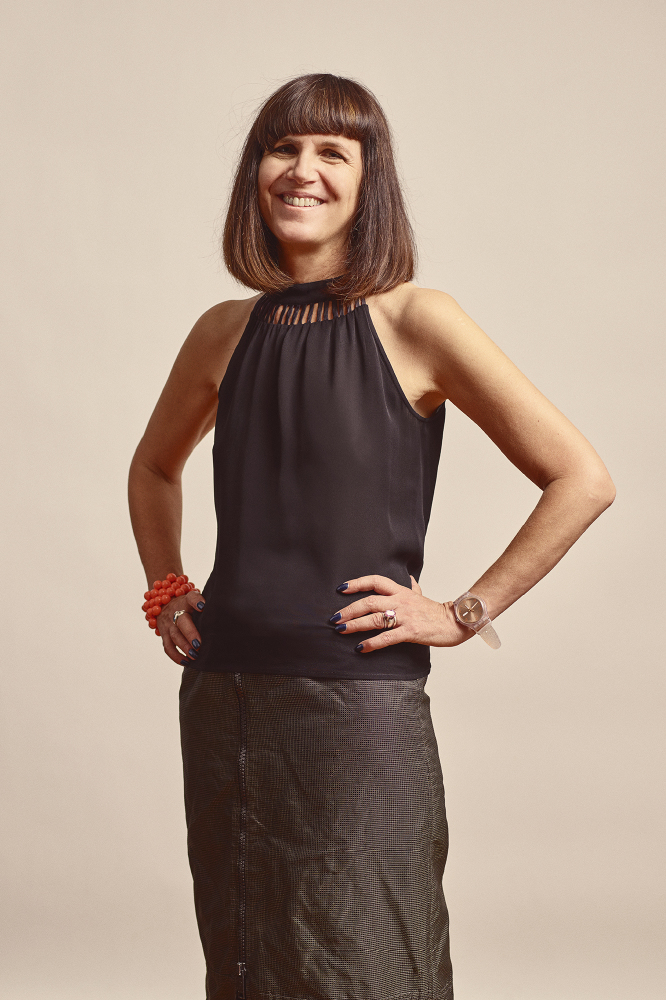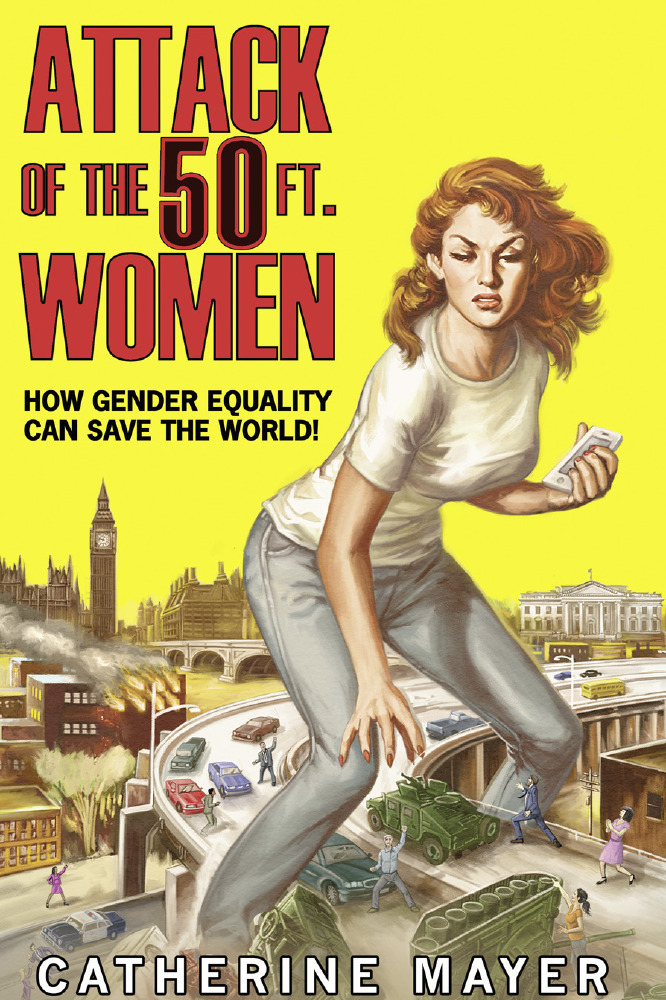Catherine Mayer was born in the US but now lives in London. She is a former editor at large of TIME magazine and In 2015 she co-founded the Women’s Equality Party with Sandi Toksvig. Mayer has just released her new book Attack of the 50 Ft. Women: How Gender Equality Can Save The World!, so we caught up with her to talk about it.

Catherine Mayer
What can readers expect from your new book Attack of the 50ft Women: How Gender Equality Can Save The World!?
A journalist just told me she found it “a page-turner” and that made me happy because I want readers to be as gripped by this subject—and as motivated to create change—as I am. I wrote Attack of the Fifty Foot Women to fill a gap. I couldn’t find a book that explained why women everywhere are still at best second-class citizens or that explained the debates and controversies that too often divide the women’s movement. I also wanted a book that would set out the case for gender equality being good for men—as it is—and that would help readers to imagine a gender-equal society. Gender-equal societies don’t exist and neither did such a book—so I wrote it.
Why do you think not a single country in the world has achieved gender equality by now?
The book uncovers the multiple interlocking mechanisms that keep women down. Some of these are obvious, such as the lack of female representation in politics and business. But when you start probing the reasons for this lack of representation, they turn out to be complex. Just to take the one example of politics: it may seem obvious that women are put off politics because it is still, visibly, a man’s world. Fewer than 8% of elected heads of state and prime ministers globally are women and the current number of male MPs in Westminster is identical to the total number of female MPs ever elected. It’s also financially risky and expensive to enter politics. Women earn less and own less than men and are time-poorer, typically taking on more unpaid caring duties. If, in spite of these disadvantages, they run for office, they face bias, conscious and unconscious. Ambitious men are admired. Women seeking office are more often disliked or assumed to be deficient as human beings, and their appearance is scrutinised and criticised with a fervour never applied to their male counterparts. The old parties tend not to value women in their ranks as they should or to understand that so-called “women’s issues” are issues that affect everyone—which is one of many reasons that Sandi Toksvig and I founded the Women’s Equality Party in 2015. Our core objectives are not just equal representation but equal pay, equality through and in education, equal treatment by and in the media, equality in healthcare and medical research, shared parenting and caregiving and an end to violence against women. These are all areas that must be fixed before gender equality will become a reality.
Where do you believe progress for women has stalled or reversing?
If we should be grateful to Donald Trump for anything (we shouldn’t), it is that his presidency has punctured the myth of progress as irresistible and irreversible. His administration is rolling back reproductive rights through its attacks on Planned Parenthood and curtailment of funding for any international organisation that might “promote” abortions. We are witnessing similar moves by other governments on different continents. In fact, wherever you look it’s much harder to find signs of progress than of oppression, whether that oppression is through a barrage of belittling imagery and online abuse or takes physical form. The digital revolution definitely created platforms for women to speak and organise but it also created new ways to attack us. Violence against women and girls is worse in some societies than others but it is endemic in every society.
Why do we find it hard to imagine a gender equal world?
It’s hard to imagine something that doesn’t exist. When I was canvassing for the Women’s Equality Party, I realised that because people didn’t know what it would be like, they also sometimes feared it. In the final chapter of my book, I take readers on a tour of a gender-equal world, Equalia, to show that it is not, as some people imagine, a place of drab uniformity or censorship. It is also not perfect or perfectly equal in other ways, but it is a kinder, happier place.
During your research for the book- what finding shocked you the most and why?
It wasn’t the individual details that shocked me but the accumulation of evidence of the barriers to women and how these become higher and wider for women of colour or from poorer backgrounds or with disabilities or because of sexual orientation or just because of the passing of the years. I did also discover some odd details that are pretty gripping. Did you know, for example, that both male and female hyenas have phalluses? This not only complicates mating but means that the first cub of a first litter is apt to die, strangled by its mother’s narrow birth canal. The statistics about movies are mind-boggling too. Female characters are assigned far less dialogue than male characters, even if they’re the female leads. The male dragon in Disney’s Mulan spouts twice the number of words given to the titular female heroine. Frozen was widely hailed as a feminist cartoon but its dialogue is split 57 per cent to 43 per cent in favour of male characters. Here’s one figure that won’t startle: female characters in films are twice as likely as male characters to get naked.


